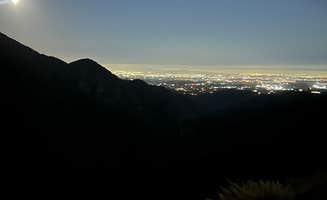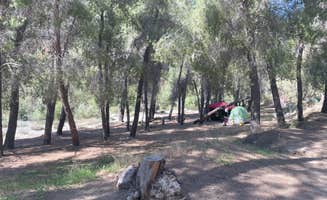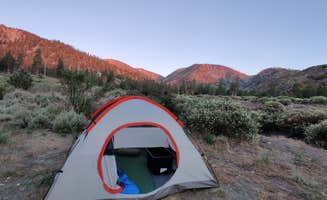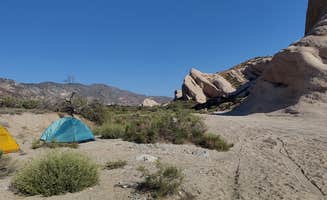Dispersed camping near Lynwood, California requires careful preparation due to the undeveloped nature of available sites. Most primitive camping options sit at elevations between 4,000-6,000 feet in surrounding national forest land. The San Gabriel Mountains provide natural boundaries for camping opportunities with seasonal temperature variations ranging from below freezing in winter months to over 90°F during summer days.
What to do
Hiking trails access: Several unmarked trails branch from the Heaton Flats dispersed area, serving as both recreation and a practical necessity. "It could be an okay rest area at the beginning/end of the hike to Bridge to Nowhere," notes camper Les R., who recommends checking current regulations before setting up camp.
Off-road adventures: The terrain near Stockton Flats Yellow Post Sites offers challenging paths for properly equipped vehicles. A reviewer mentioned, "If you go to the end of 3N06 (main off-road path) there is a good hike that you can take for several hours." These routes provide access to remote camping areas unreachable by standard vehicles.
Night sky viewing: Many sites offer unobstructed views of stars due to elevation and distance from urban light pollution. At higher elevation points, campers report visibility of major constellations and occasional meteor showers. "The view is gorgeous in the morning sunrise!" reports one camper about overlook areas.
What campers like
Accessibility from urban areas: The relative proximity to Los Angeles makes these sites convenient for weekend trips. "Perfect last minute late night hold over stop," says Joey B. about Angeles Crest Overlook, highlighting its value as a quick escape from urban environments.
Zero-cost camping: Most dispersed sites charge no fees, making them budget-friendly options. "No cost and you can almost always find a spot, even on a Saturday in summer," notes Nathaniel C. about certain areas, though this advantage comes with the trade-off of no amenities.
Pet-friendly spaces: Many dispersed sites welcome dogs without restrictions. One camper at Hare School Park noted, "There's a dog park kind of area with a big field they can run around and just clean up after them." Other areas provide direct trail access for pet exercise opportunities.
What you should know
Service limitations: Cell coverage varies dramatically by location and carrier. One camper at Rim of the World Byway noted its convenient location "by Rim of the world scenic byway and mormon rocks. Easy in and out but next to train tracks," highlighting both advantages and noise considerations.
Vehicle requirements: Many sites demand appropriate transportation. "Deep in nature, beautiful area...if you have a Jeep, Truck or similar vehicle that can go off-road," states one review about access conditions. Some locations feature steep entry roads that standard passenger vehicles cannot navigate safely.
Seasonal closures: Forest service roads frequently close due to weather conditions or maintenance needs. Campers should verify current status before travel as conditions change without notice. Road quality deteriorates quickly after rain or snow events, further limiting access.
Regulatory changes: Forest Service regulations regarding dispersed camping change frequently based on fire danger levels, environmental concerns, and staffing availability. Always check the most current forest orders before planning trips.
Tips for camping with families
Safety planning: Establish clear boundaries for children at roadside sites. Some areas border busy highways or drop-offs. "We found a spot near the road that I'll post for others," shares Joe R., indicating the importance of selecting sites with adequate separation from traffic.
Noise considerations: Some locations experience significant traffic or visitor activity throughout the night. "There were two others in our lot that stayed the night too," notes Valerie about overnight company at one overlook area, suggesting families may want more secluded options for restful sleep.
Alternative facilities: Hare School Park provides limited overnight parking with nearby field space. "You can overnight park here with your RV without problems," states Julia G., though the site lacks traditional camping amenities and is "not tent friendly" according to another reviewer.
Tips from RVers
Parking limitations: Most dispersed sites accommodate only smaller vehicles. "We decided not to go to the site because it looked like a one lane road and too tight for our 35 ft bumper pull," reports one RVer about attempted access to yellow post sites. Smaller vans and truck campers have more options.
Level ground scarcity: Finding adequately flat parking presents challenges for larger rigs. Alexander B. recommends, "If you go a bit further down alongside the road you can find some nice spots," indicating the importance of scouting before committing to a location with larger vehicles.
Overnight-only options: Some locations function primarily as temporary stops rather than destination camping. "Quick stop friendly," notes one RVer about roadside pull-offs, suggesting these work better for self-contained units needing a place to sleep rather than extended stays.





